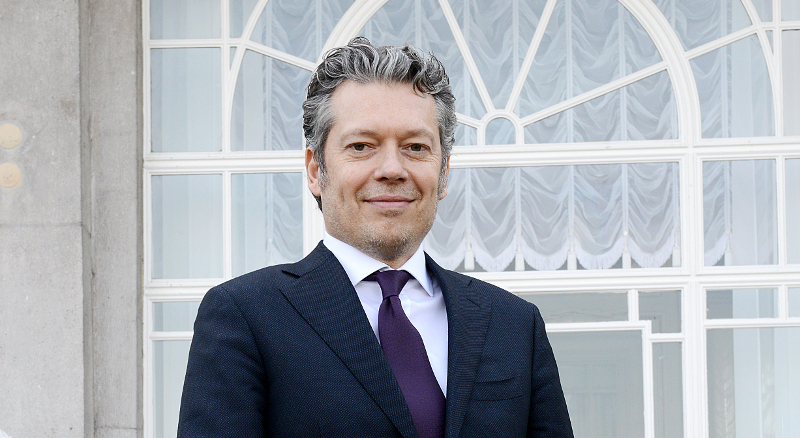
There are many factors to consider when choosing an investment advisor. This article will discuss Fiduciary responsibility and conflicts of interest. Hourly rates and retainer fees are also discussed. These regulations should be followed by your investment advisor. Register your advisor with the Securities and Exchange Commission, or the state securities agency.
Fiduciary responsibility
Fiduciary duty entitles investment advisors and others to act in the client’s best interests. They must also disclose relevant facts to avoid conflicts of interests. Financial liability and civil liability can be triggered by a breach of fiduciary duties. Fiduciary duties can be violated by excessive trading, improper margin trading, or making false statements about securities.
Fiduciary duty means that advisors must act in the best interest of clients, keeping the client at the center of their decisions. This includes making sure their advice is relevant to the client's goals. To do so, the advisor must obtain sufficient information about the customer's financial situation. Fiduciaries typically decide what is in the client’s best interest and then discuss it.
Conflicts of interests
Potential conflicts of interest should be disclosed by investment advisers to clients. This disclosure must include the nature of the conflict, how the conflict is managed, and how the adviser will mitigate the conflict. It must be disclosed at each stage of an investor's investment recommendation. Depends on the circumstances of the relationship between adviser and client, whether or not an adviser has conflict of interest will depend on what they are doing.

Conflict of interest refers to a situation in which the financial interests of both the client and the investment advisor are not aligned. For example, an investment professional may have a financial incentive to sell a certain security. The advisor is paid a commission by the broker who introduced the investor to this security. Advisors will therefore tend to look for investments that are likely to generate the highest commissions.
Hourly rates
Flat fees, hourly rates, and other fees can be charged by investment advisors for time spent with clients. These fees will usually be disclosed upfront. Before paying for any services, clients should see an invoice. Hourly rates can also vary depending on experience and specialization. Expert advisors may charge more than less experienced ones.
For firms providing investment advice, the hourly fee model is very popular. For a one-time service, the hourly charge is very reasonable. You may want to consider a flat-rate or percentage fee if you need ongoing support.
Retainer charges
While commission-based financial advisors can be appealing, they are not the right choice for everyone. These advisors are salespeople who earn commissions based upon the sale of financial products to their clients. These products might include mutual funds and stocks as well as insurance. Retainer-based advisers, however, don't charge commissions and are transparent.
Retainer-based financial advice is a great way to avoid conflicts of interests. The advisor is paid one to two percent of client portfolio value. For example, if the client has a $500,000 portfolio, the advisor would earn $5,000 to $10,000 each year. This type arrangement is not recommended as it could lead to conflicts of interest. A few retainer-based financial professionals also make ancillary revenue from the implementation and maintenance of clients' investment plans.

Choose an investment advisor
Choosing an investment advisor is one of the most important financial decisions you can make. It is crucial to find an investment advisor that is registered and accredited. Has a proven track record and offers advice. It is also important to choose a professional that is a member of Canada's Investment Industry Regulatory Organization (IIROC), which oversees compliance and regulates all investment dealers in Canada.
There are many kinds of advisors. The best advisor for your company will depend on your goals. Although past success doesn't guarantee future results a solid relationship with an advisor can help build trust and honesty. Look for someone who is open with their clients and communicates with them regularly.
FAQ
How do you get clients for your consultancy business?
Find an area that you are passionate about. It could be anything from social media to public relations, but there must be something you feel strongly about. If this is the case, it may be worth starting small by focusing on a niche market such web design. Once you have identified the niche, be sure to fully understand its characteristics. What problems does it solve? What problems can it solve? And most importantly, how can you help them?
It is also possible to approach businesses directly.
If all else fails you can offer your services at free events such as conferences or networking nights. It's a great way to get in touch with potential customers, without spending too much on advertising.
How can I become an expert consultant?
The first step is to find an area you are passionate about. First, build relationships. Knowing what your clients want and how they work is key. The final step is to provide results.
While you don't need to be the best at all things, it is important to be better than others. You must also have passion for your work. It is not enough to simply say, "I want to become a consultant." It's important to believe in your abilities and do what you love.
What are the advantages of being a consultant?
Consultants often have the option to choose when and what they do.
This allows you to work wherever and whenever you want.
It means that you can change your mind easily without worrying about losing your money.
Finally, you have the ability to control your income levels and establish your own schedule.
Statistics
- According to statistics from the ONS, the UK has around 300,000 consultants, of which around 63,000 professionals work as management consultants. (consultancy.uk)
- My 10 years of experience and 6-step program have helped over 20 clients boost their sales by an average of 33% in 6 months. (consultingsuccess.com)
- So, if you help your clients increase their sales by 33%, then use a word like “revolution” instead of “increase.” (consultingsuccess.com)
- Over 50% of consultants get their first consulting client through a referral from their network. (consultingsuccess.com)
- On average, your program increases the sales team's performance by 33%. (consultingsuccess.com)
External Links
How To
What does a typical consultant's day look like?
The type of work that you are doing will affect the typical day. But, in general, you will spend your time researching, planning and meeting new clients.
Meetings are a common way to discuss problems and issues with clients. These meetings can be conducted over the phone, by email, face-to-face, or online.
Also, proposals are documents that outline your ideas or plans for clients. These proposals will be presented to clients by you and a mentor.
After all the preparation and planning, it's time to actually create some content. Writing articles, designing websites, editing photos or conducting interviews are just some of the options.
It depends on the project's scope, you might need to do some research to collect relevant statistics. You might need to determine how many customers you have, and whether they buy more than one product.
After gathering enough information, you can present your findings to clients. Your findings may be delivered orally, or written.
Finally, you must follow up with clients after the initial consultation. For example, you might call them periodically to see how things are going or send emails asking them to confirm that they received your proposal.
This is a long process that can take some time. However, it is crucial to stay focused and to maintain good relationships.